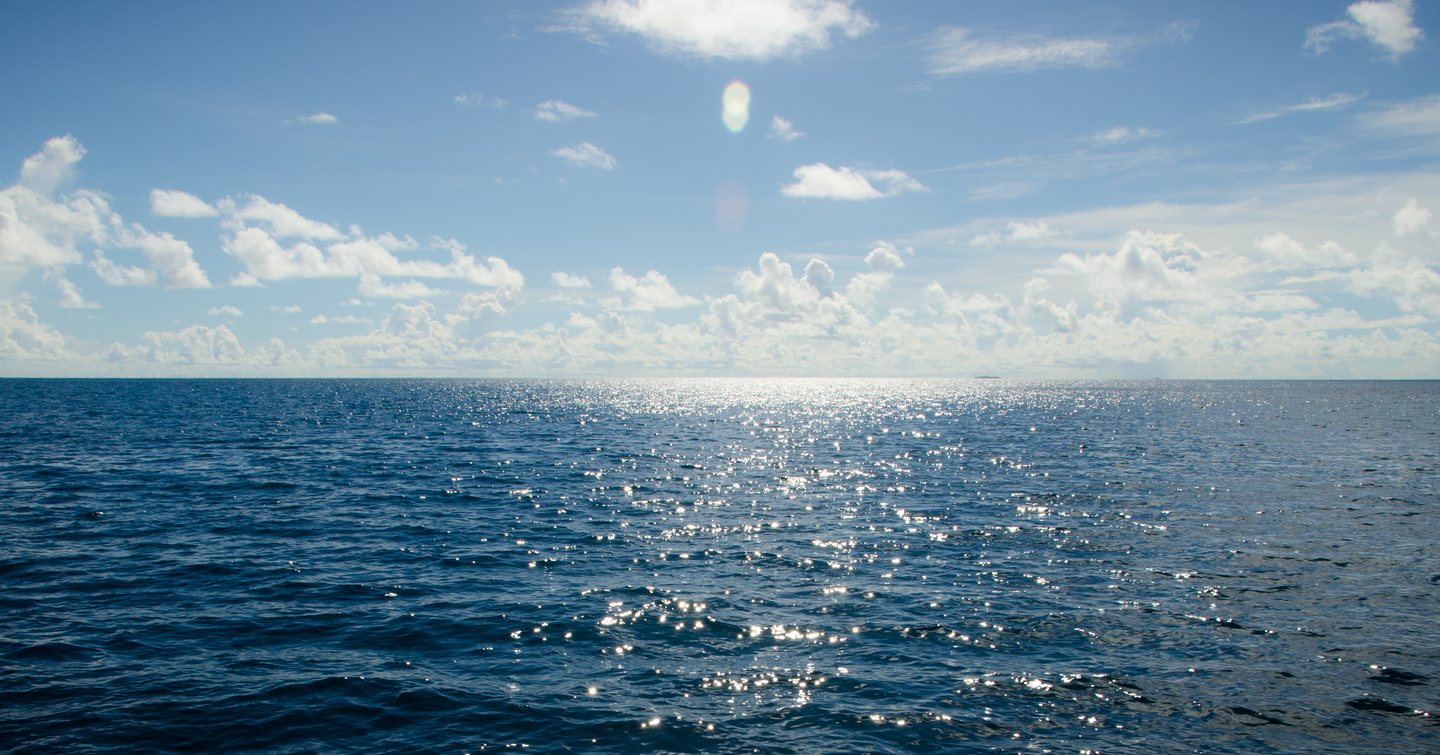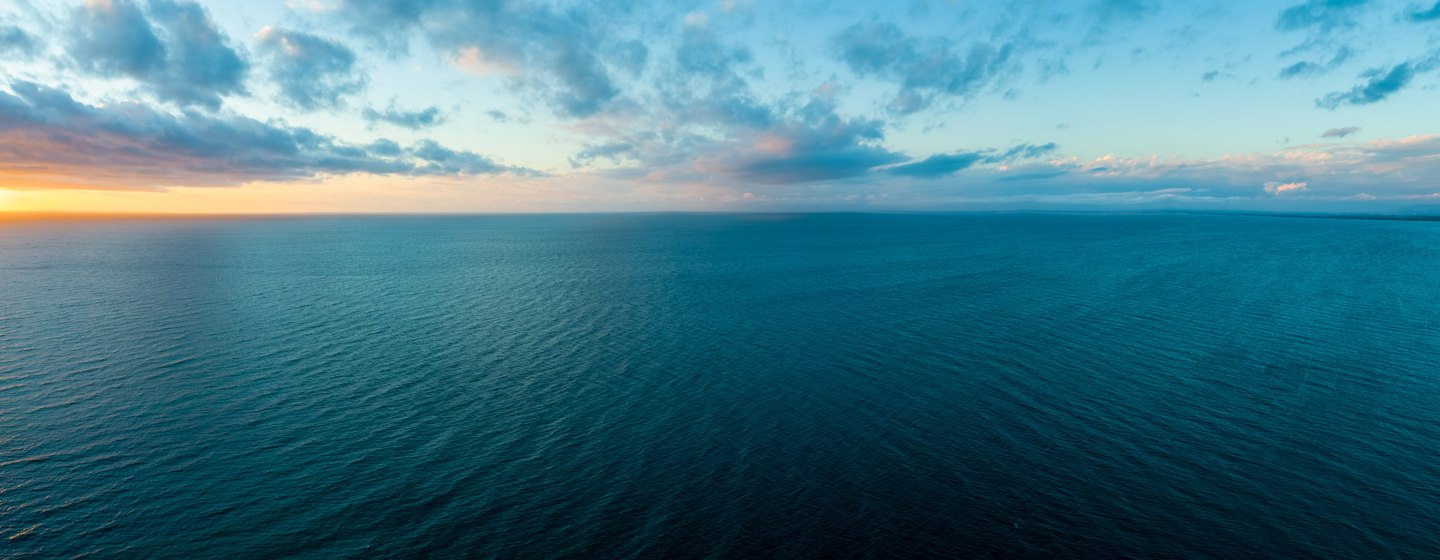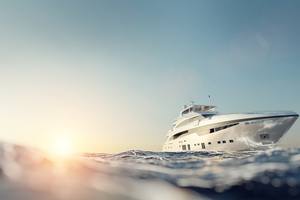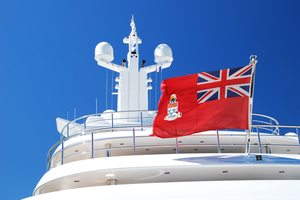International waters hold significant importance for various reasons, including legal, economic, environmental, and geopolitical factors.
Beyond the territorial waters of any single country, international waters provide a neutral ground where transactions for yacht sales or transfers can occur under internationally recognized maritime laws. This article outlines the basics and encourages further reading on the benefits of yacht buyers exploring options beyond coastal jurisdictions.
What are International Waters?
International waters, also known as 'the high seas', refer to areas of the ocean that are not subject to the jurisdiction of any single country. These waters begin beyond a country’s territorial sea, which extends up to 12nm (22.2km) from its coastline.
International waters cover approximately 50% of the earth's surface and include all oceans and seas that fall outside the Exclusive Economic Zones (EEZ) of coastal nations, that extend 200nm (370km) from the coast.
Territorial vs. International Waters
| Criteria | Territorial Waters | International Waters |
|---|---|---|
| Distance from Shore | 0–12 nautical miles | Beyond 12 nautical miles |
| Jurisdiction | Full sovereignty of coastal state | No single nation has jurisdiction |
| Law Enforcement | National maritime and criminal law | Flag state law; UNCLOS provisions apply |
| Freedom of Navigation | Restricted (subject to local laws) | Generally unrestricted |
| Yacht Transactions | Subject to import duties, VAT | Often used for flagging & tax planning |

Key Definitions of International Waters
The United Nations Convention on the Law of the Sea (UNCLOS) is an international treaty that comprehensively regulates ocean space, defining maritime zones that are divided into three main categories:
Territorial Sea
Up to 12 nautical miles from a country's baseline; the coastal state has full sovereignty.
Exclusive Economic Zone (EEZ)
Extends from 12 to 200 nautical miles from the baseline; the coastal state has special rights regarding the exploration and use of marine resources.
High Seas
Areas beyond the EEZ, are open to all states for navigation, fishing, overflight, and laying submarine cables and pipelines.
Specific Distance and Measurement Data for Maritime Zones
Accurate distance thresholds are critical for understanding maritime jurisdiction, yacht operations, and legal compliance. Below are the standard zones recognized under the United Nations Convention on the Law of the Sea (UNCLOS), along with practical conversions and analogies for context.
| Zone | Distance (Nautical Miles) | Kilometers (km) | Miles (mi) | Jurisdiction |
|---|---|---|---|---|
| Territorial Waters | 12 nautical miles | 22.2 km | 13.8 mi | Full sovereignty of coastal state |
| Contiguous Zone | 24 nautical miles | 44.4 km | 27.6 mi | Limited enforcement powers |
| Exclusive Economic Zone (EEZ) | 200 nautical miles | 370.4 km | 230.2 mi | Economic rights only (not sovereignty) |
| High Seas | Beyond 200 nm | >370.4 km | >230.2 mi | International jurisdiction |
Visual Distance Comparisons (Analogies)
To help contextualize distances,12 NM (22.2 km) is roughly the driving distance from downtown Miami to Miami Beach. 24 NM (44.4 km) is similar to the distance from London to Windsor Castle by road. 200 NM (370.4 km) is comparable to a straight line from New York City to Washington, D.C.
Unit Conversion Reference
1 Nautical Mile (NM) = 1.852 kilometers = 1.15078 statute miles
Used in maritime navigation due to direct relation with the Earth's latitude (1 NM = 1 arc minute)
Why It Matters for Yacht Owners and Transactions
- Territorial waters: Subject to import duties, VAT, and flag restrictions
- Beyond 12 NM: Often preferred for yacht registration, charters, and tax structuring
- 200 NM EEZ: Still subject to coastal state’s resource control, but not general law enforcement.

The Role of International Waters in Yacht Transfers
International waters are crucial for global maritime trade, allowing ships and yachts to travel freely without interference from any single nation's laws. This freedom of navigation is vital for the international shipping industry, facilitating the movement of goods and resources between countries.
The freedom and neutrality of international waters simplify the process when transferring ownership of a yacht. In these waters, transactions can occur under internationally recognized maritime laws, independent of any single country's jurisdiction. This environment enhances legal certainty and facilitates smoother transitions of ownership, ensuring compliance with applicable regulations while promoting flexibility for yacht owners and stakeholders.
Taking a yacht offshore by 12nm, into an Exclusive Economic Zone (EEZ), during ownership transfers offers strategic advantages related to legal neutrality, privacy, tax efficiency, flexibility in ownership, and access to a broader international market. These factors contribute to a smoother and more efficient transaction process for luxury yacht acquisitions and transfers on a global scale.
Rights and Restrictions by Maritime Zone
| Water Zone | Primary Rights | Key Restrictions |
|---|---|---|
| Internal Waters | Complete sovereignty | No foreign vessel entry without permission |
| Territorial Waters (0–12 NM) | Enforcement of law, taxation, resource use | Innocent passage only; no weapons or spying |
| Contiguous Zone (12–24 NM) | Customs, immigration, sanitation enforcement | No general law enforcement jurisdiction |
| Exclusive Economic Zone (0–200 NM) | Rights over marine resources (fish, oil) | No sovereignty over surface navigation |
| International Waters | Freedom of navigation, fishing, research | No enforcement unless allowed by treaties or piracy laws |

Among the various benefits of conducting yacht transfers offshore, two stand out prominently:
Avoiding Import Duties
Yacht transactions often leverage international waters to circumvent import duties and taxes. By conducting the transfer in these waters, buyers can defer or bypass taxes that would typically apply if conducted within a country's territorial jurisdiction.
Clear Title Transfer
Conducting yacht sales offshore helps ensure a clear transfer of title, minimizing the risk of legal disputes over ownership and facilitating smoother transactions.
Regulatory Framework: UNCLOS
The United Nations Convention on the Law of the Sea
UNCLOS (full text can be found here) is widely regarded as the cornerstone of international maritime law, establishing a framework that fosters peaceful cooperation among nations, safeguards marine environments, promotes economic development through maritime activities, and ensures fair utilization of ocean resources.
Its principles and provisions profoundly influence global maritime policies and practices, including those of yacht purchases, transfers, and operations in international waters. Understanding and adhering to UNCLOS provisions are essential for yacht owners, operators, and stakeholders navigating the complexities of international maritime activities.
Examples of Territorial Claims by Country
| Country | Claimed Territorial Waters | Special Claims |
|---|---|---|
| United States | 12 NM | 200 NM EEZ; U.S. Virgin Islands extend claim via baseline |
| China | 12 NM | Contested "Nine-Dash Line" claim in South China Sea |
| United Kingdom | 12 NM | Various overseas territories maintain separate claims |
| Russia | 12 NM | Extended Arctic shelf claim under UNCLOS Article 76 |
| Australia | 12 NM | Comprehensive EEZ with extensive maritime surveillance |
Step-by-Step Guidance for Yacht Owners
This section provides structured guidance tailored to yacht owners planning to sail internationally, charter, or manage transactions involving foreign waters. We added core documentation, legal implications, and insurance insights to ensure full compliance and peace of mind.
Choose a Flag State (Country of Registration)
- Consider tax policies, liability protection, and enforcement reputation.
- Popular flags: Cayman Islands, Marshall Islands, Malta, Netherlands.
Register the Vessel
- Obtain a Certificate of Registry (proves nationality and legal status).
- Required for customs clearance and entry into foreign ports.
Comply with Safety and Crew Regulations
For private use: Ensure basic safety gear (SOLAS-compliant) and radio licenses.
For commercial or charter use:
- ISM Code (International Safety Management)
- MLC (Maritime Labour Convention) compliance
Plan Customs and Entry Requirements
- Carry clearance papers, passports, and crew lists.
- Notify port agents ahead of arrival for required inspections.
Secure Valid Insurance
- Must include international liability, salvage, pollution, and crew coverage.
- Required for mooring at most international marinas.
Required Documentation for International Sailing
| Document | Purpose | Required For |
|---|---|---|
| Certificate of Registry | Vessel identification & nationality | All vessels |
| Tonnage Certificate | Confirms vessel volume (used in port fees) | Most vessels over 24m |
| Insurance Certificate | Verifies legal and liability coverage | All voyages, required in most ports |
| Radio Station License | Legal VHF/marine comms authorization | All vessels with radio equipment |
| Crew Qualifications | STCW / ENG1 (for commercial yachts) | All charter/commercial operations |
| Charter License | Authorizes legal charter activity | Some jurisdictions (e.g., Med, US) |
Common Legal Scenarios and Outcomes
| Scenario | Outcome |
|---|---|
| Anchoring in territorial waters without clearance | Fines, boarding, or detention by coast guard |
| Hosting paying guests without charter license | Vessel impounded or fined for illegal commercial activity |
| Collision in international waters | Flag state assumes jurisdiction for investigation |
| Drug possession onboard while offshore | Vessel and owner subject to international law enforcement |
| Lack of crew contracts or safety compliance | Detention or denial of entry at commercial ports |
Legal Consequences by Jurisdiction
| Jurisdiction | Violation Example | Legal Consequences |
|---|---|---|
| Territorial Waters | Entering without clearance | Vessel boarding, fines, or expulsion |
| Contiguous Zone | Illegal dumping or smuggling | Detention and administrative penalties |
| Exclusive Economic Zone | Unauthorized fishing or oil exploration | Seizure of vessel, international tribunal cases |
| International Waters | Piracy or drug trafficking | Prosecution under universal jurisdiction or flag state law |
Summary: Navigating International Waters with Confidence
In this article, we discussed what is international waters and their importance for yacht buyers and sellers.
- Also known as the high seas, international waters are waters beyond any single nation’s sovereignty.
- Starting point: Typically begin 12 nautical miles (22.2 km) from the shoreline, beyond the territorial sea.
- Coverage: Encompass about 50% of Earth's ocean surface, excluding Exclusive Economic Zones (EEZs).
Defined in the United Nations Convention on the Law of the Sea (UNCLOS):
- Territorial Sea: 0–12 nm
- Contiguous Zone & EEZ: 12–200 nm
- High Seas: Beyond 200 nm
- International waters fall into the UNCLOS-defined High Seas zone, governed by flag state jurisdiction, with exceptions for piracy and environmental enforcement.
Importance for Yacht Transactions
- Provides a neutral legal venue for yacht ownership transfers, charters, and registrations, free from coastal-state taxes or import restrictions.
- Transactions conducted in these neutral waters are recognized under uniform international maritime law, minimizing jurisdictional uncertainty .
Benefits of Conducting Yacht Deals Offshore
- Tax efficiency: Can help avoid or defer import duties, VAT, or state-specific sales taxes.
- Regulatory clarity: Transfers fall under flag-state regulations, not coastal-state legislation, ensuring consistent legal frameworks.
- Operational simplicity: Neutral waters simplify transactions and reduce administrative burdens like customs or port formalities.
Proof of Location & Legality
Yachts can verify presence in international waters using:
- GPS logs
- AIS tracking
- Date-stamped photographic or video evidence
- Legal affidavits from third parties.
These records ensure ownership transfers are legally recognized under international maritime jurisdiction.
International Waters in Yacht Transactions
| Topic | Details |
|---|---|
| Definition | Waters beyond 12 nautical miles from shore; outside national sovereignty |
| Legal Framework | Governed by UNCLOS; enforced by vessel's flag state |
| Key Maritime Zones | 0–12 NM: Territorial; 12–24 NM: Contiguous; 200+ NM: High Seas |
| Importance in Yacht Sales | Neutral venue for tax-efficient yacht transactions & registrations |
| Benefits | Avoids VAT/import tax, simplifies legal compliance, reduces bureaucracy |
| Proof of Location | GPS logs, AIS tracking, photo/video evidence, affidavits |






